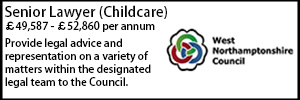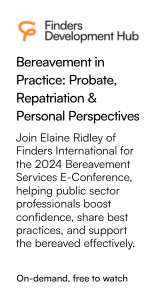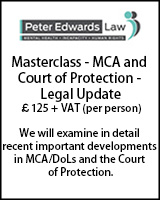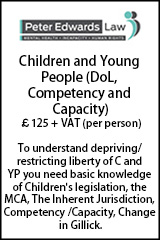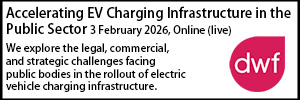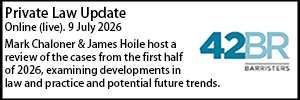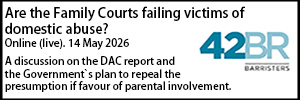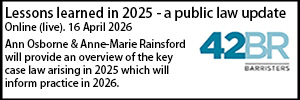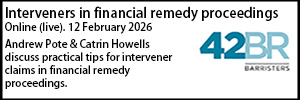Court of Appeal hands down ruling on use of medical research literature in care proceedings
- Details
The Court of Appeal has allowed appeals brought by a mother and a father against findings made by a judge that their infant son sustained an injury through an acceleration/deceleration event - attributable to “a lack of reasonable parental care”.
In D and A (Fact-Finding : Research Literature) [2024] EWCA Civ 663, Lord Justice Baker concluded that despite the “very great industry and concern” that HH Judge Suh devoted to the case, her evaluation of the evidence was “flawed” and her reasoning did not sustain her conclusion.
Outlining the background to the case, Baker LJ noted that prior to the matters which gave rise to the proceedings, the appellants and their two boys, ‘A’ and ‘D’ lived together in a family home.
In February 2023, when A was nearly 7 months old, his parents took him to the local hospital reporting that, whilst at home, he had fallen on the sofa, hitting his head on the arm rest in which there were wooden slats. He cried, then went floppy and his eyes rolled. He did not lose consciousness but remained “drowsy and floppy” for about 10 to 15 minutes.
The parents reported that both they and the maternal grandmother and step-grandfather were all present in the room at the time of this incident, referred to as "the sofa incident".
In subsequent accounts, none of them said that they had seen A fall, but all reported hearing a noise. A had been given paracetamol but had vomited it back up. On examination, he was found to be “alert and inquisitive”, with no signs of injury and normal eye and facial movements, said Baker LJ.
On the following day, the mother returned A to the hospital reporting that he had slept poorly and vomited during the night. A CT scan conducted that day revealed intracranial bleeding.
The hospital staff suspected that these injuries had been inflicted non-accidentally and informed the local authority's children's services. The parents agreed to both boys being accommodated by the local authority pursuant to s.20 of the Children Act 1989.
Later in February 2023, care proceedings were started in respect of both boys. At a hearing on 7 March, A was made subject to an interim care order and D to an interim supervision order.
The court granted permission for the joint instruction of the following experts, all consultants – Dr Kieran Hogarth, paediatric neuroradiologist, Ms Benedetta Pettorini, paediatric neurosurgeon, Dr Russell Keenan, paediatric haematologist, Mr Richard Markham, ophthalmologist, and Dr Alun Elias-Jones, paediatrician.
The fact-finding hearing started in October 2023. The local authority sought findings, set out in a threshold schedule, that A's injuries had been inflicted by one of four individuals – the mother, the father, the grandmother or step-grandfather – and, if the injuries had been inflicted by one of those four adults, that the parent, or parents, who had not inflicted the injuries had failed to protect A from harm.
However, at the conclusion of the evidence, the local authority told the judge that it was now taking a "neutral position" on whether findings should be made.
Judgment was handed down in November 2023. “It was lengthy and detailed and was accompanied by three annexes: (A) a summary drafted by the judge of various research papers cited by the experts; (B) a note on the law for fact-finding hearings agreed by counsel, and (C) a plain English summary of the judge's findings”, said Baker LJ.
Turning to the key parts of the judgment under appeal, Baker LJ noted that the judge's analysis of the expert evidence and the research literature to which two of the experts referred formed a “major part of the judgment” and “lies at the heart of this appeal”.
He said: “The judge warned that, whilst it was helpful to have these research papers, she was ‘mindful that research looks at patterns in cases and does not look at A and his specific injuries’. She identified problems with the categorisation of cases for research purposes, reciting Dr Hogarth's evidence that ‘determination of whether something is accidentally or inflicted is not a straightforward matter’ and that it was therefore necessary to ‘apply healthy scepticism about whether the definitions in these cohorts may or may not be correct as to how determinations were made’.”
At the end of Annex A, after setting out comments on the 18 papers, the judge reached the following conclusions under the heading "What does the research tell us?":
"The literature before the court is of varying quality and there is no one study which will answer the questions that this court has to answer directly. There is no case exactly like A's. I agree with Dr Hogarth that the literature needs to be read in conjunction with the clinical and radiological experience of the experts. I agree that I need to be careful about over reliance on the literature but I trust it is clear from my analysis that I do not disregard it either. These are complex cases and I have set out the strengths and weaknesses of the papers I have read.
“[…] I agree with Dr Hogarth that "the current state of understanding does not provide infallible evidence". However, the literature can show the larger patterns of injuries observed in research so far. These larger patterns are:
- Subdural haemorrhages are statistically significantly associated with abusive head trauma.
- Retinal haemorrhage[s] correlate strongly with abusive head trauma in children under 3 years old.
- Falls in infants are common. Most falls result in no injury and serious injuries from short falls are very rare.
- Subdural haematoma[s] arising out of short falls are low probability.
- There is a significant association between spinal injury found on the MRI and abusive head trauma.
- The two main theories that are set out in literature to explain spinal blood are tracking and direct injury and none of the literature or the experts set out a well accepted alternative explanation so any alternative remains in the realms of the unknown. This is an area which is contentious.
- When researchers categorise falls, A's would fall with the lower end of the 'short fall' definitions.
- Symptoms are proximate to shaking injuries but dating them remains contentious and reliance on perpetrator statements (as with all witness reports) may not be reliable. I do not have any papers considering symptoms of head trauma more generally."
In a final detailed section headed "Drawing together the medical evidence", the judge set out her conclusions on the expert evidence.
At paragraph 138, she summarised the expert evidence as to the intracranial and retinal haemorrhages:
"Mr Markham, Ms Pettorini and Dr Elias Jones all accept that it is possible that the cause was the sofa incident but think it unlikely. Dr Hogarth took the view that such bleeding from a low-level mechanism was rare but was possible. The expert views taken into account their clinical experience and the Atkinson paper. However, in my view I can place very limited weight on the Atkinson paper with the weaknesses I have spelt out in the literature summary. Dr Elias Jones, Ms Pettorini and Dr Hogarth accept that is it possible to have an impact injury without a visible impact mark but that in the majority of cases there is one from clinical experience …. The absence of an impact mark is rare in terms the expert witnesses' clinical and radiological experience."
Next the judge considered evidence about the family background. She identified a number of factors that "might increase risk". She cited the fact that the older child, D, has a diagnosis of autism and had presented with “challenging behaviour”.
She added, however, that this had not been explored with the parents in evidence in any detail, and noted that "family members and professionals speak in glowing terms of [the mother] as a mother and there is no concern raised in any of the papers about her care for D. No concerns at all have been raised by D's school on the papers before me. The mother is specifically commended for her care for D."
The judge then turned to her conclusion.
At paragraph 275, the judge then set out the arguments for and against the sofa incident being the cause of the injuries. She identified the following factors as being in favour of the sofa incident as the cause:
"(a) All experts accept that it is possible that the sofa fall could cause retinal and subdural bleeds.
(b) It possible that the head injury left no impact sign.
(c) This was a witnessed event (albeit not directly) by 4 witnesses, two of whom I found credible.
(d) The medical evidence suggests that the symptoms take place proximate to the injury. A does not look visibly unwell in the pictures provided in evidence as taken that morning by the mother, which might lead one to pinpoint the sofa as the cause of his injuries.
(e) The noise of impact described, if accurate, suggests a significant impact.
(f) It is possible that the blood on the spine was caused by tracking from the brain. This is not the explanation which the experts favour ….
(g) The social worker's observations of the sofa are consistent with those of the family and she has no criticism to make of them."
She then (at paragraph 276) identified the following factors against the sofa incident being the cause:
"(a) The literature in general suggests that falls are very common in young children and injuries are usually trivial. Dr Hogarth agrees "we do not see subdural very often in low level mechanism of injury".
(b) Injuries to the brain and retina like this from short falls are "rare".
(c) Although the experts gave evidence that the short fall could cause the retinal and intracranial bleeding, this view was obtained from the experts in cross examination, predominantly by reference to the Atkinson paper in particular, on which I can place very limited weight.
(d) Both Dr Hogarth and Ms Pettorini think tracking is the less likely explanation for the spinal blood, albeit Dr Hogarth takes care to stress the weaknesses of the research in this respect and to stress that his view is not definitive…
(e) The descriptions of the noise of impact increased over time in the evidence and are variously described. The evidence of the loud noise of the impact does not sit easily with the lack of sign of impact.
(f) On the balance of probabilities, the spine did not make contact with the wooden arm of the sofa.
(g) The description of the sofa incident has become more vague over time in the parent's evidence and one analysis is that they have become less willing to commit to the details of the day.
(h) The timing of the sofa incident fluctuates across the evidence.
(i) The evidence of the parents was vague and lacking detail in relation to what was happening that morning before the sofa incident.
(j) [The grandparents] did not hold A. He was in the background on the sofa whilst they were chatting to the parents. Their focus of attention was not on him so if he were displaying mild symptoms from an earlier incident I am not confident that they would have picked them up.
(k) The force necessary to cause the injuries on the sofa is not quantifiable in precise terms …. [I]t seems to me that it is unlikely that a child A's size in a seated position on a soft sofa surface with some give could generate force significant enough to cause such serious injuries. The force involved in A's fall back would have been less than that involved in the greater distances involved in the Atkinson and Alspac papers. By all accounts this is among the shortest of short falls. It is onto a surface which is part fabric and padding with wood underneath, not an entirely hard surface.
(l) The consensus at the experts meeting was the injury occurred within the 24 hours prior to admission. Although logically symptoms follow injury, the impression I gained was that this was not an exact science and that mild symptoms described in literature may be overlooked. A's symptoms developed over time as described by the parents."
Finally, the judge set out her findings as follows:
“It seems to me more likely than not that A did have an incident on the sofa during which the grandparents were present. I accept the evidence of all family members as to his symptoms. However, I am not satisfied that the sofa incident was the cause of his injuries and the symptoms flowing from them. I agree with the analysis of Ms Pettorini consistent with the treating clinicians, that this was arising out of an earlier trauma. I conclude on the balance of probabilities that the incident on the sofa was not the cause of the injuries.
“[…] I find that the injury was sustained by A in the care of his parents and he came to significant harm in their care. The evidence does not enable me to identify a sole carer responsible for the injury or with sole knowledge of it.
“I am satisfied that A sustained an injury through an acceleration/deceleration event, either non-accidental or accidental. This involved more significant force than the sofa incident. One or both of the parents would have, or should have, been aware of an event involving more significant force than the sofa. If accidental, it seems more likely than not that there was a degree of recklessness or negligence. If unwitnessed there was a degree of lack of supervision or awareness on the part of the adults involved. It was either deliberately inflicted, accidental or negligently arising. In my view was serious and attributable to a lack of reasonable parental care."
Counsel for the mother put forward five grounds of appeal, which were adopted by counsel on behalf of the father.
The grounds were summarised by Baker LJ as follows:
(1) The judge acted as her own expert and conducted her own analysis of the medical research material. She was wrong to make findings that were not supported by evidence but were in the main made as a result of her analysis of the medical research literature (grounds 1 and 2).
(2) She failed to make proper findings on the oral evidence she had heard but conducted a 'balance sheet' analysis of 'factors' as if she were carrying out a welfare analysis (ground 2).
(3) She erred in her treatment of the "protective" and "risk" factors (ground 3).
(4) She wrongly made findings which were not explored with the parents during evidence nor with counsel in submissions and which were based in part on speculation and hearsay evidence in the documents not put to the parents (ground 4 and 2).
(5) She reversed the burden of proof (ground 5).
Baker LJ said: “It was argued that the judge elevated her own analysis of the literature to a status far above other evidence, and used that as the prism through which she evaluated all the other evidence in the case. The judge tried to find the answer buried within literature and, having found what she thought was the answer, applied it to the case. As a result she failed to analyse or give any proper weight to the totality of the expert evidence, in particular the evidence of Dr Hogarth, as to the possibility of the accident on the sofa causing the injuries.”
Discussing the appeal, Baker LJ warned that when a large volume of research is cited, “there is a danger that it may obscure other important parts of the evidence”.
He found that despite the judge’s “conscientious approach” to the task, she “went astray” in her treatment of the research evidence in a number of respects.
He said: “The judge's exhaustive analysis of the medical literature and the expert evidence is testament to the care she devoted to this case. But on any view it was unnecessary and disproportionate.”
Lord Justice Baker added: “The judge repeatedly referred to the research literature throughout her judgment. Despite her warnings to herself that she needed to be careful about over-relying on it, it seems to me that is unfortunately what happened.
“The most striking of many examples is that, when carrying out the balance sheet analysis towards the end of the judgment, the first factor identified by the judge for the proposition that the injuries were caused by another acceleration/deceleration mechanism prior to the sofa incident is that it "best explains the particular constellation of injuries from a medical perspective by reference to the literature in my view" [my emphasis]. This is a clear example of the judge assessing the evidence by reference to her own assessment of the literature.”
Baker LJ observed that the starting point when considering the possibility of an earlier incident should have been the eyewitness evidence about A's condition.
He said: “None of the family members described anything unusual about A prior to the sofa incident. His grandmother, whose evidence the judge found to be credible, described him playing with his toy octopus and waving it up and down. The judge discounted this on the basis that the literature stated that timing of injuries was "controversial", and symptoms of a shaking injury varied and could in some cases be mild. As none of the adults picked A up or paid him close attention in the period immediately before the sofa incident, she thought it was possible that they may have missed symptoms of an earlier acceleration/deceleration event. But this reasoning was based on a mixture of her reading of the literature and speculation, not on the evidence.”
Alongside her over-reliance on the literature, Baker LJ concluded that the judge “failed to reach her decision on the basis of the totality of the evidence”.
He said: “There were a number of significant factors in the family background which pointed against a finding that A's injuries had been inflicted. […] Of particular importance was the fact that the parents attended the hospital promptly after their account of A's fall; that there were no other signs of injuries or indicators of abuse; that the care given to D was seen to be of a high quality; that this was not a socially isolated family, or one that was previously known to social services; that there was no evidence of domestic abuse in the household prior to the incident in question; that the social worker reported observing a warm relationship between the parents, and that they showed appropriate warmth to both children.
“These were all factors which pointed away from the injuries being inflicted by one of the parents and away from any culpability for negligence. Yet when the judge came to draw up her balance sheet analysis of whether the sofa incident had caused the injuries, there was no reference to these factors at all, save for a passing reference to the fact that the social worker had no criticism to make of the family.”
Finally, Baker LJ observed “flaws” in the judge's ultimate conclusion. He noted that having concluded that the injuries occurred through an acceleration/deceleration event that occurred prior to the sofa incident, the judge was “unable to reach any conclusion as to whether it was accidental or non-accidental”.
He continued: “At no point did the judge stand back and consider the implausibility of the scenario she eventually concluded had happened – that the child, living with parents about whom there were no other material concerns and who had demonstrated a close and loving relationship with their children, had suffered an earlier incident that day, either accidental or deliberate; that following that incident he had not displayed any symptoms that were noted by any of the adults; that he had been seen by his grandmother to be playing happily with his toy octopus; that in the presence of four adult family members he had then suffered a fall onto the hard arm of the sofa after which he developed clear symptoms of encephalopathy, which led his parents to take him to hospital immediately and thereafter to co-operate entirely transparently with the professional agencies.”
Allowing the appeal, Baker LJ concluded that despite the “very great industry and concern” that the judge devoted to the case, her evaluation of the evidence was flawed and her reasoning did “not sustain her conclusion”.
He set aside the judge's findings. Phillips LJ and Elisabeth Laing LJ agreed.
Lottie Winson
















